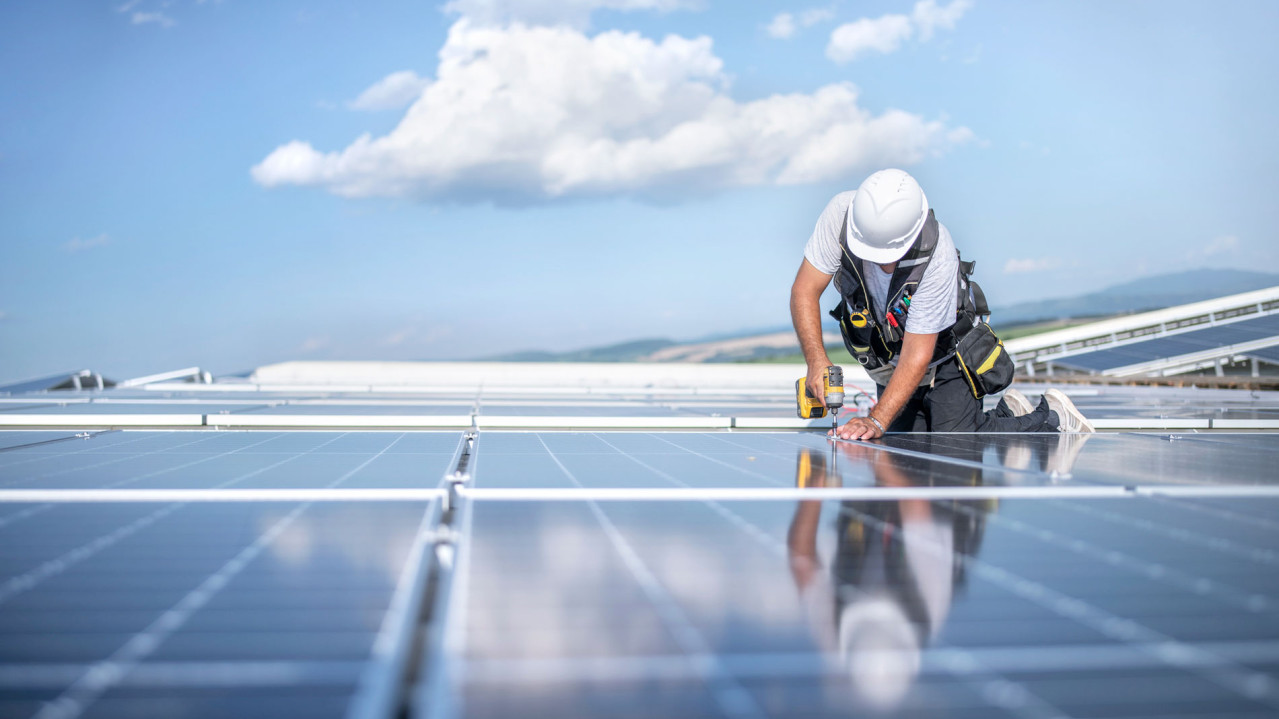
The Government’s Investment In Solar Panel Manufacturing & Solar In Australia
The Australian government has announced $1 billion in funding and schemes to boost the domestic production of solar panels. Here's what it means for Australia.
The Government’s Investment In Solar Panel Manufacturing & Solar In Australia
The Australian government recently announced it will dedicate $1 billion to boost the domestic production of solar panels through a variety of subsidies, grants and other forms of support. Unveiled in late March 2024, the ‘Solar SunShot program’ is a “pit to panel” investment in domestic solar panel manufacturing that Prime Minister Anthony Albanese has described as a way “to supercharge Australia’s ambition to become a renewable energy super power at home and abroad”.¹
Once implemented, the program will involve the Australian Renewable Energy Agency (ARENA) allocating funding from the federal government to provide Australian companies with production subsidies, grants and other forms of support to help capture more of the global solar manufacturing market and create more local manufacturing jobs.¹ ² As a core benefit of the program, the program aims to directly reinvigorate jobs across regional areas, like NSW’s Hunter Region, and boost mining jobs across the country through increased metal and mineral production – solar panels are made using metals and minerals, including aluminium, copper, phosphate and silica-bearing quartz, that are abundant in Australia.
Additionally, with every new manufacturing job created, there’s the potential to create as many as 3.5 new jobs across the supply chain.¹ That said, manufacturing won’t be brought back overnight, so the program will likely start with heavy reliance on imported cells and module components until the local supply chain is built out enough to enable the domestic production of complete panels.³ This will take time, but with state-level initiatives, like the NSW Government’s $275-million ‘Net Zero Manufacturing’ fund to help local businesses capitalise on renewable manufacturing opportunities, there’s certainly opportunity.¹
While some commentators have responded negatively to the program, largely seeing the investment as too little, too late, it’s worth noting that Australia was once a world leader in solar energy technology. However, it must be acknowledged that with just one company manufacturing solar panels domestically, Australia’s solar journey hasn’t been managed as well as it should have.
One brand leads the way locally – operating since 2011, Tindo is Australia's only solar panel manufacturer with a 150MW production capacity factory in Adelaide, South Australia. Using Australian innovation, Tindo makes panels to withstand Australia’s harsh environment that have been shown to be best-performing in the market through testing at the Desert Knowledge Australia Solar Centre.
Even so, Australia’s solar panel uptake is the highest in the world per capita which provides strong domestic demand and there’s a range of state-level initiatives underway to enable more local businesses to participate. What’s more, there’s the recent creation of the Net Zero Economy Authority (NZEA) which will help Australia transform to a net zero economy with investment in manufacturing to support renewables at its core.⁴ Taking into consideration these factors – along with the growing appetite for powering everything with solar in Australia – there's certainly hope for a local solar panel manufacturing industry.
We had solar and battery installed in January and have been very pleased with the results. The installation process was seamless and the equipment has worked perfectly. We have reduced the cost of our energy consumption considerably. We would thoroughly recommend both Tindo Solar and sonnen.
Solar uptake in Australia’s residential market
Per capita, Australia leads the world in solar panel uptake and with 2023 delivering a new record in local solar panel installations, there are now more than 3.69 million solar installations delivering a combined capacity of over 34.2 gigawatts in Australia.⁵ It’s residential and small businesses that are pushing this growth, with small-scale solar – 100 kilowatts or smaller – the fastest-growing sectors. The 12% annual growth in the residential sector over the last five years has seen more than three million homes with solar panels, highlighting the economic potential for the local solar panel manufacturing industry.⁶
All in all, the case for a homegrown solar panel manufacturing industry in Australia is compelling, and with competitive payback periods on solar panels and the option to increase energy independence with a home battery pushing solar panel sales to record heights in 2023 – and 2024 is looking to continue that trend – it’s clear Australia agrees.
Whether you’re new to solar or you’ve already installed solar panels at home and you’re considering the next step in your journey to energy independence at home – installing a home battery to store the energy your rooftop system generates – we hope you find the resources below useful in making informed choices about the way you use energy at home.
What are solar panels made of?
Silicon is well known as one of the most important materials used in the manufacturing of solar panels, but as it’s used in the production of solar cells and there are various other components in a functioning solar panel, it’s actually just one of many essential materials. In addition to the monocrystalline or polycrystalline silicon solar cells, the other parts that make up a solar panel include the aluminium frame, tempered glass sheet, encapsulant material (e.g., EVA film), junction box using 12v wiring and a back sheet which can be made with a variety of materials.⁷
How do solar panels work?
To understand how solar panels work, you first need to understand how energy from the sun is converted into power that can be used at home. When the silicon cells are exposed to photons of sunlight, the electrons within the silicon are released which produces an electrical charge. Known as the ‘photovoltaic effect’, this charge creates a direct current (DC) which is captured by the wiring and then converted to alternating current (AC) – which is the type of electrical current your appliances and devices use – by an inverter.⁸
How do solar batteries work?
Solar batteries work by storing the surplus energy that solar panels generate from sunlight rather than sending this surplus energy back to the grid. So, by connecting a battery to your home’s rooftop solar panels, any excess energy the panels generate is stored in the battery and can be used to power your home when there isn’t adequate sunlight. This means that without a battery, you’d be reliant on power from the grid, which can increase energy costs.
Don't have solar?
sonnen works with hundreds of qualified partners across Australia who can provide you with high-quality, best-in-class solar systems. One of our partners is Tindo Solar who can help you get the most out of your investment by collecting your clean energy with a customised solar panel set-up to help you cut electricity costs and ensure maximum efficiency from your sonnenBatterie.
Already have solar panels?
If you’ve already installed solar panels at home, there are numerous benefits of adding a solar battery to your existing rooftop solar system – here’s an overview of a few of them.
Immediate savings – With solar batteries becoming increasingly affordable and the home battery schemes that further reduce the cost of a home battery system, more households can invest in home solar batteries and start shaving at least hundreds of dollars off their annual electricity costs immediately. The amount you’ll save depends on factors like your location and usage patterns – find out more in The financial benefits of home solar batteries.
Offset lower FiTs – If you’ve been getting feed-in tariffs (FiTs) by selling solar power to the grid, you may have noticed how they’ve dropped over time. What’s more, as they’re no longer mandatory in some states, if you’re relatively new to solar, you may not have been able to access FiTs at all. But installing a solar battery can potentially offset this situation – find out more in our article, Falling FiTs: Why home batteries are key to solar savings.
Backup power – To continue working in the event of a blackout, some home batteries, like the sonnenBatterie Evo, feature backup power. This is an important consideration when buying a home solar battery with the increased frequency of extreme weather events like storms, floods, heatwaves and bushfires that can result in a total loss of electricity. We look at this in our guide, Blackout protection – What is it & why does it matter?.
Join the thousands of Australian households who’ve installed a solar battery and open the door to a more cost-effective and energy-independent future. To get started on your journey to energy independence today, explore the sonnen range or use our free online energy savings calculator to see your estimated savings over a 10-year period.
¹ Govt to invest $1b in solar panel manufacturing
² Australia takes a $1b Sunshot
³ Could spending a billion dollars actually bring solar production back to Australia?
⁴ Investing in a net zero economy
⁵ Australian PV market since April 2001
⁶ Australian homes three times more likely to have solar panels than a pool







